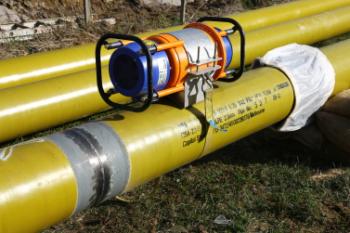 The method used for testing components and assemblies through non-destructive process based on different radiation absorption is called radiographic testing. The radiation penetrates through the material either in the electromagnetic way of very short wavelengths or particulate radiation. As different materials are of divergent densities and thickness, the amount of radiation too varies depending on this factor. Unabsorbed radiation is recorded on a film or photosensitive paper to determine the flaws in the material.
The method used for testing components and assemblies through non-destructive process based on different radiation absorption is called radiographic testing. The radiation penetrates through the material either in the electromagnetic way of very short wavelengths or particulate radiation. As different materials are of divergent densities and thickness, the amount of radiation too varies depending on this factor. Unabsorbed radiation is recorded on a film or photosensitive paper to determine the flaws in the material.
Why is this process used?
The process of radiography is used to discern the features of material with various thicknesses or physical densities as compared to their surrounding component. Naturally, large scale differences are easily detectable than small ones. Generally, the process of radiography can detect those features which have appreciable thickness in a parallel direction to the radiation beam. This shows that the ability to detect flaws depends on the orientation of the test piece during the inspection process. Discontinuities in the material can be detected as long as they are not too small. Remember, radiography is more effective when the flaws are not planar.
Where to apply radiographic testing?
Radiographic testing is a kind of non destructive testing that is usually applied on welded components and castings. Actually, it is well suited to test semiconductor devices for various types of flaws, unsoldered connections, broken wires, and misplaced components. The sensitivity of radiation depends on many factors:
Both metallic and non-metallic materials as well as composites can be tested through radiography.
What are the limitations of radiography?
Radiography is generally an expensive process of inspection compared to other NDT methods. Large scale investments and swift allocations are required for a radiographic laboratory. If the component of a material is thick enough, it may be a time consuming inspection. Sometimes, it becomes hard to detect very attenuated cracks even if it's properly oriented. If sufficient segregation is not detected, discontinuities like flakes, inclusions in wrought material, micro porosity and micro fissures are really hard to detect. Laminations are impossible to identify with radiography, due to unfavorable orientation. Laminations do not yield differences in absorption that enable laminated areas to be distinguished from limitation of free areas.
However, there are some kinds of materials whose flaws can be detected only through radiography due to its specific advantages. Hire an NDT expert to conduct the inspection process cleanly and professionally.
